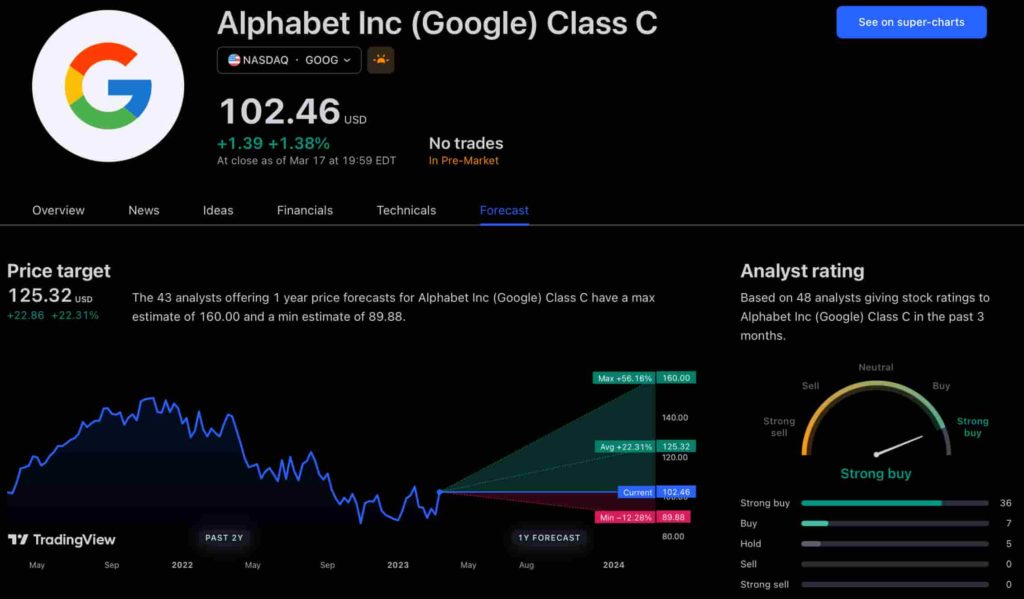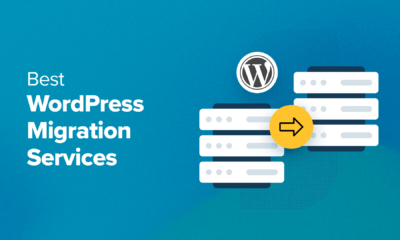The new app is called watchGPT and as I tipped off already, it gives you access to ChatGPT from your Apple Watch. Now the $10,000 question (or more accurately the $3.99 question, as that is the one-time cost of the app) is why having ChatGPT on your wrist is remotely necessary, so let’s dive into what exactly the app can do.
NEWS
SEO and Temporarily Out-of-Stock Product Pages via @sejournal, @martinibuster
Google’s John Mueller answered an Office-hours hangout question about what to do about web pages for products that are temporarily out of stock. The person asking the question wanted to know how to balance concerns about SEO with the user experience of users who may not like a page with out of stock products.
Temporarily Out of Stock Products and Poor User Experience
Many merchants are suffering from supply chain issues and are having difficulty keeping products in stock. Showing site visitors a web page full of products that are temporarily out of stock is a bad user experience.
People may leave that site and never return.
Google’s John Mueller Offers SEO-Friendly Solution for Out of Stock Pages


Will Removing Out of Stock Pages Hurt SEO?
The person asking the question was concerned that removing the pages of temporarily out of stock items might harm the ability of those pages to rank once they’re back in stock.
Advertisement
Continue Reading Below
John Mueller explains how Google ranks out of stock product pages that are temporarily removed and subsequently restored when they’re back in stock.
He also suggested different ways to handle the web pages of products that are temporarily out of stock.
How to Balance the User Experience and SEO?
The SEO for the ecommerce site asked the following question:
“My client is having a rather unique issue that is relevant to the times.
Ordinarily I would recommend that if a product is out of season or out of stock that they keep the URL live and put a note to the user as to when the product will be available.
With supply chain shortages this company is experiencing an inordinate amount of temporarily out of stock products and this creates a negative user experience.
They want to take all the URLs offline so that the customers stop complaining about the number of out of stock items on the ecommerce site.
However this means their URLs and SEO is impacted.
How do we balance the user experience with SEO? “
Advertisement
Continue Reading Below
Four Ways to Handle Out of Stock Products Online for SEO
John Mueller offered four tips on how to handle the problem of web pages for products that are out of stock in a way that won’t impact the user experience and will be SEO-optimized for Google as well.
1. Leave the Product Pages Up
Mueller suggested leaving the product pages up but to use Schema.org structured data to tell Google that the products are out of stock and when it’s back in stock to update the structured data accordingly.
This answer is useful for when the temporarily out of stock item is known to be back in stock relatively soon.
John Mueller advised:
“I think this is always a bit challenging, specifically around out of stock and temporarily out of stock content.
It is something where what works best for us is if we can keep the URL online for things that are really temporary, in the sense that if the URL remains indexable and with structured data you tell us this product is currently not available.
Then we can at lest kind of like keep this URL in our index and keep refreshing it regularly to pick up that change in availability as quickly as possible.”
2. Noindex the Page and/or Un-link It
The next approach is to add the noindex meta tag to the web pages with out of stock content and/or remove all links to the pages.
Mueller explained how to do it:
“However, if you decide to noindex these pages or if you decide to just remove the internal linking to these pages, then when that state changes back, we should try to pick that up fairly quickly as well.
And we try to understand these state changes through things like site maps and internal links.
So especially if you add a product back and then suddenly it has internal links again, that helps us to pick that up again.”
3. How to Speed Up Indexing of Newly In-stock Product Pages
Mueller next offered a suggestion of how to speed up indexing of pages that were noindexed and/or removed from all links.
Advertisement
Continue Reading Below
He shared this tip:
“You can speed this up a little bit by being a bit deliberate with your internal linking.
So in particular, …when things are linked from the home page, we think that they’re a little bit more important and we go off and try them out fairly quickly.
If you add those products back and if you add a link to your home page saying, oh these things are not in stock again, then we can take that and say, oh this seems to be an important thing.
We will double check these pages a bit quicker.
And we’ll see if they’re actually now in stock or not.
So that’s kind of the direction I would go there.”
4. Hedge Your SEO With Google Merchant Center
Mueller next suggested using Google’s Merchant Center to tell Google about in-stock and out-of-stock products plus get free exposure in the following Google Search surfaces:
- Shopping tab
- Google Search
- Google Images
- Google Maps
- Google Lens
Advertisement
Continue Reading Below
All of the above are context-relevant services that Google offers users who use their apps that can show products (without charge) when the context presents itself.
Mueller explained:
“I think also with regards to in-stock and not in stock, especially when it comes to products, one thing you can also do is kind of hedge your SEO together with Product Search.
So if you submit a Merchant Center feed, then we can also show those products within the… I don’t know what it’s called… the product search side bar thing or product listing ads I think it used to be called …I don’t know what the current name is.
We can also show those products there.
And we can show them there based on the feed.
So we don’t necessarily need to re-crawl the individual pages to recognize, Oh the page says it’s in stock.
We can just recognize in the feed that you submit to us, like suddenly the availability changed, we can put that back in.
So those are kind of the aspects there.
On the one hand if you want to remove it with a noindex or just removing internal links, that’s fine.”
Advertisement
Continue Reading Below
Google Can Handle Out of Stock Products
An interesting insight that Mueller shared is that links from the home page communicate to Google that the pages being linked to are important or of high priority.
He suggested adding a back in stock link from the home page in order to get Google to prioritize crawling and ranking those pages, particularly if they had been offline for a time.
Citations
Learn How to Show Products for Free in Google
How to SEO the URLs of Temporarily Out of Stock Products
Watch John Mueller answer the question at the 33:37 Minute Mark [embedded content]
Facebook Faces Yet Another Outage: Platform Encounters Technical Issues Again

Uppdated: It seems that today’s issues with Facebook haven’t affected as many users as the last time. A smaller group of people appears to be impacted this time around, which is a relief compared to the larger incident before. Nevertheless, it’s still frustrating for those affected, and hopefully, the issues will be resolved soon by the Facebook team.
Facebook had another problem today (March 20, 2024). According to Downdetector, a website that shows when other websites are not working, many people had trouble using Facebook.
This isn’t the first time Facebook has had issues. Just a little while ago, there was another problem that stopped people from using the site. Today, when people tried to use Facebook, it didn’t work like it should. People couldn’t see their friends’ posts, and sometimes the website wouldn’t even load.
Downdetector, which watches out for problems on websites, showed that lots of people were having trouble with Facebook. People from all over the world said they couldn’t use the site, and they were not happy about it.
When websites like Facebook have problems, it affects a lot of people. It’s not just about not being able to see posts or chat with friends. It can also impact businesses that use Facebook to reach customers.
Since Facebook owns Messenger and Instagram, the problems with Facebook also meant that people had trouble using these apps. It made the situation even more frustrating for many users, who rely on these apps to stay connected with others.
During this recent problem, one thing is obvious: the internet is always changing, and even big websites like Facebook can have problems. While people wait for Facebook to fix the issue, it shows us how easily things online can go wrong. It’s a good reminder that we should have backup plans for staying connected online, just in case something like this happens again.
NEWS
We asked ChatGPT what will be Google (GOOG) stock price for 2030

Investors who have invested in Alphabet Inc. (NASDAQ: GOOG) stock have reaped significant benefits from the company’s robust financial performance over the last five years. Google’s dominance in the online advertising market has been a key driver of the company’s consistent revenue growth and impressive profit margins.
In addition, Google has expanded its operations into related fields such as cloud computing and artificial intelligence. These areas show great promise as future growth drivers, making them increasingly attractive to investors. Notably, Alphabet’s stock price has been rising due to investor interest in the company’s recent initiatives in the fast-developing field of artificial intelligence (AI), adding generative AI features to Gmail and Google Docs.
However, when it comes to predicting the future pricing of a corporation like Google, there are many factors to consider. With this in mind, Finbold turned to the artificial intelligence tool ChatGPT to suggest a likely pricing range for GOOG stock by 2030. Although the tool was unable to give a definitive price range, it did note the following:
“Over the long term, Google has a track record of strong financial performance and has shown an ability to adapt to changing market conditions. As such, it’s reasonable to expect that Google’s stock price may continue to appreciate over time.”
GOOG stock price prediction
While attempting to estimate the price range of future transactions, it is essential to consider a variety of measures in addition to the AI chat tool, which includes deep learning algorithms and stock market experts.
Finbold collected forecasts provided by CoinPriceForecast, a finance prediction tool that utilizes machine self-learning technology, to anticipate Google stock price by the end of 2030 to compare with ChatGPT’s projection.
According to the most recent long-term estimate, which Finbold obtained on March 20, the price of Google will rise beyond $200 in 2030 and touch $247 by the end of the year, which would indicate a 141% gain from today to the end of the year.
Google has been assigned a recommendation of ‘strong buy’ by the majority of analysts working on Wall Street for a more near-term time frame. Significantly, 36 analysts of the 48 have recommended a “strong buy,” while seven people have advocated a “buy.” The remaining five analysts had given a ‘hold’ rating.

The average price projection for Alphabet stock over the last three months has been $125.32; this objective represents a 22.31% upside from its current price. It’s interesting to note that the maximum price forecast for the next year is $160, representing a gain of 56.16% from the stock’s current price of $102.46.
While the outlook for Google stock may be positive, it’s important to keep in mind that some potential challenges and risks could impact its performance, including competition from ChatGPT itself, which could affect Google’s price.
Disclaimer: The content on this site should not be considered investment advice. Investing is speculative. When investing, your capital is at risk.
NEWS
This Apple Watch app brings ChatGPT to your wrist — here’s why you want it

ChatGPT feels like it is everywhere at the moment; the AI-powered tool is rapidly starting to feel like internet connected home devices where you are left wondering if your flower pot really needed Bluetooth. However, after hearing about a new Apple Watch app that brings ChatGPT to your favorite wrist computer, I’m actually convinced this one is worth checking out.
-

 WORDPRESS6 days ago
WORDPRESS6 days ago10 WordPress Influencers to Follow in 2024 – WordPress.com News
-

 WORDPRESS7 days ago
WORDPRESS7 days ago8 Best WordPress Migration Services (Compared)
-

 MARKETING6 days ago
MARKETING6 days agoFeeling Stuck: What to Do When You Don’t Know What to Do
-

 SEARCHENGINES6 days ago
SEARCHENGINES6 days agoGoogle Image Search Adds Pixel Level Object Segmentation Animation
-

 PPC5 days ago
PPC5 days agoA History of Google AdWords and Google Ads: Revolutionizing Digital Advertising & Marketing Since 2000
-

 SEARCHENGINES5 days ago
SEARCHENGINES5 days agoMore Google March 2024 Core Update Ranking Volatility
-

 PPC5 days ago
PPC5 days agoCompetitor Monitoring: 7 ways to keep watch on the competition
-

 PPC5 days ago
PPC5 days ago31 Ready-to-Go Mother’s Day Messages for Social Media, Email, & More















You must be logged in to post a comment Login